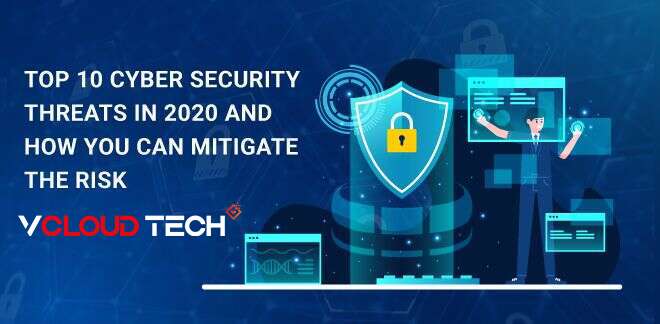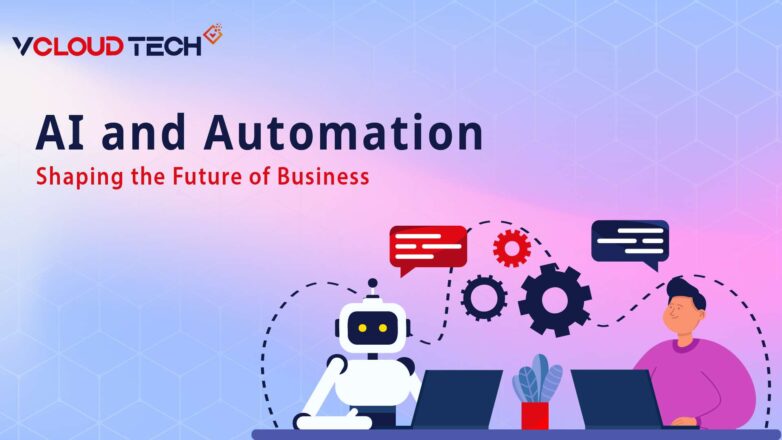TOP 10 CYBER SECURITY THREATS AND HOW TO MITIGATE RISK
TrendMicro provides advanced online protection for your virtual world. Protect your identity, socialize safely, and get protection against ransomware and other web threats
Try Now Free
2020 has been an eventfulyear with many major organizations all across the globe facing major cybersecurity and data breach issues. We have identified the top 10 cybersecurity threats that may impact your business the most. According to a security research firm, 81 global firms in 81 different countries reported data breaches in the first half of 2020 alone with 80% of firms seeing an increase in cybersecurity attacks this year. Phishing cybersecurity attacks have also seen a dramatic increase of 600% since the end of February and attacks rose 148% in March and the average ransomware payment rose by 33% to $111,605 as compared to Q4 2019. (Source: Security Boulevard)
Security Boulevard also reported on some of the biggest organizations hit by these cybersecurity attacks are Software AG which is Germany’s second-largest software vendor. Sopra Steria which is a French IT services company hit in October 2020, Hackers were able to hijack Telegram in September getting access to the email data of some big names in the cryptocurrency industry. Seyfarth Shaw, a Chicago-based legal firm was hit by a massive malware attack that took down their entire email system. Carnival Corporation also faced a major data breach in August of 2020. Security Boulevard also reported on other major data breaches in 2020 which include Marriott, MGM, Twitter, Magellan Health, and Zoom.
2020 has been a tough year for the world economy with a lot of businesses adapting the work from home formula to run their operations. This has caused a lot of data breaches and different type of security threats that are impacted businesses as an employee may access their information from an unsecured network. What are the Top 10 Cyber Security Threats in 2020? Here are a few that we believe should be prioritized to make sure they do not impact your business andprevent cyberattacks.
- IoT-Based Attacks
vCloud Tech has been in the Cybersecurity and IoT business since our inception by providing our customers with state-of-the-art IoT solutions from industry-leading IoT Solutions Providers. This is why we understand that the number of internet-connected “smart IoT” devices in businesses and even homes are starting to increase. The issue that most people do not understand is that most of these smart devices do not have strong cybersecurity installed which creates openings for hackers and attackers to take over these devices to infiltrate home or business networks.
According to FireEye’s annual threat report“Reaper is a malware that exploits vulnerabilities in IoT devices to gain access and spread itself. The result of these types of attacks is that threat actors can enlist millions of compromised IoT devices to drive large–scale attacks, including the distributed denial-of-service (DDoS) attacks that commonly disrupt and take down the website, gaming, and other internet services.”
What’s an IoT-Based Attack?
An IoT cyberattack is any attack that takes advantage of a user’s use of internet-connected smart devices such as Wi-Fi–enabled devices, alarm clocks, speakers, etc. to sneak malware or ransomware onto a network. These cyberattacks target your IoT devices specifically because they are often ignored when it comes to applying cybersecurity patchesmaking them and easier to hijack.
How Can YouMitigateIoT Attacks on Your Devices?
The most important aspect of preventing IoT-based cybersecurity attacks is having a detailed accounting of all internet-connected devices on your network, and what operating systems they are running. Make sure to keep the firmware for these IoT devices up-to-date is also very important, as this can help take care of exploits that have been patched by the developer.
Also while adding smart IoT devices to your organizations’ offices, make sure to verify them, and see if any firmware updates from the developer are available and can be run before installing them on your office premises. Finally, wisely consider how each smart IoT device impacts the complexity and cost of running your cybersecurity strategies.
- Ransomware
Ransomware is a malware attack that has been on the decline in general over the last year. In 2020, ransomware attacks targeting individuals and according toITPro Today, “The rate of detections within businesses rose from 2.8 million in the first quarter of 2018 to 9.5 million in the first quarter of 2019. That’s nearly a 340% increase in detections”. This has a lot to do with organizations installing state-of-the-art Cybersecurity Solutions on their networks.
The main reason why organizations are being targeted more than private citizen‘s devices now is that businesses have a lot more money and incentive to pay ransoms. Another reason that was mentioned in the ITPro article is the bitcoin price crash which made crypto-mining attacks less profitable and is pushing cybercriminals to aim at different attack strategies.
How Do Ransomware Attacks Work?
Ransomware cybersecurity attacks usually involve the attacker corrupting a user’s systems or devices with a piece of malware that encrypts all of their system data. The user is then offered a proposition, they eitherhave to pay the ransom or lose their systems data forever.
In 2020, ransomware attacksare no less grave a threat than it ever was. Each day, organizations face the risk of encryption ransomware making its way into their devices and destroying their system data.
How Can You Mitigate Ransomware Threats?
There are a bunch of strategies for dealing with ransomware cybersecurity attacks. The first thing you should do is to use strong network security solutions, such as network firewalls, to prevent malware from being installedon your devices. The second thing to consider is for individual workstations to have web and email security tools installed that are designed to scan email attachments for encryption ransomware detection.
Finally, having a business continuity/disaster recoveryendpoint backup solutions in place that includes an offsite backup server of all of your most vital business data can help to protect your organization against loss of data. If your networks get infected with ransomware, you can restore your data from the backup solution.
- Phishing/Social Engineering Attacks
In 2018, we saw an immense amount of email phishing cybersecurity attacks against all kinds of targets. According to statistics provided by Small Business Trends, “1 in every 99 emails is a phishing attack and this amounts to 4.8 emails per employee in a five-day workweek.” When contemplating just how many emails are sent every single daywhich is estimated by statistics cited by Inc.com to be over 269 billion emails a day. Additionally, as highlighted by Small Business Trends, “Close to a third or 30% of phishing email attacks make it past default security.”
What’s a Phishing Attack?
Phishing cybersecurity attacks are a type of social engineering attack where the cybercriminalproduces a fraudulent text, email, or website to trick a user into surrendering sensitive personal informationsuch as her or her login credentials for work, passwords to online accounts, or credit card information, etc.
Of all the cyber threats on this list, phishing email attacks are considered by cybersecurity professionals amongst the most dangerous because they can trick an employee of any organization into giving up their authentic access credentials, and then abuse those privileges to take over orcreatedisorderin your organizations’ systems.
Also, as time goes on, more cyber attackers are utilizing phishing attack strategies because of how effective,cheap, and simple they can be to pull off. Phishing Attack a low-risk, high-reward tactic forcybercriminals that can be used with only a minimal investment of time and effort.
How Can You Mitigate Phishing Attacks?
Some of the most effective counters to stop phishing and other social engineering cyberattacks are:
- Providing cybersecurity training to your organization’s employees so they can recognize a phishing email and other attack attempts.
- Employing a strategy of minimum privilege for user accounts in your system would limit the access of each employee to have minimum access or needed to fulfill their job.
- Employ 2-step authentication systems to access emails with highly sensitive data.
- Utilize anti-phishing cybersecurity solutions that are able of detecting falsified emails that may contain dangerous links or requests for information from phishers.
By doing these four things, you can minimize the risk and potential damage that a phishing email cyberattacks can impact your systems.
- Internal Attacks
One of the biggest current cybersecurity threats faced by any organization is its disgruntled employees. The inside access that employees in your systems give them access that makes them capable of causing great damage if they choose to abuse their access privileges for personal benefit. They also may unintentionally allow their user accounts to be compromised by cyberattackers, or inadvertently download dangerous malware onto the official workstations.
Whether it is through deliberate malfeasance or by unknowing accident, the greatest risk to any cybersecurity architecture is from the employees who have access to and use network assetsdaily.
What Makes Insider Attacks a Threat?
The main reason why insider attacks continue to beone of the biggest cybersecurity threats to look for year after year is that they have an immense potential to cause damage to the organization. Acareless or disgruntled employee can break your network security open wide enough to allow cyber attackers access for a major data security breach.Also, these cyberattacks can be hard to foresee and avert without thorough groundwork.
How Can You Mitigate Insider Attacks?
The best practice to reducenetwork security threats and vulnerabilities in case of an internal attack are for any business to use a policy of least privilege to limit what systems and IT resources any of their employees can access to the minimum required for their job. This way, if an employee’s user account is compromised or deliberatelymisused, the damage caused by that access will be kept to a minimum.
While this tactic is not a guaranteed plan, it can reduce your risk exposure. Also, by withdrawing a user account’s access privileges from employees once it has been compromised, the organization can help to contain the cyberattack and prevent the account from being used to do more damage in the future.
- DDoS Attacks
Distributed denial of service (DDoS) cybersecurity attacks remain the most significant cybersecurity threat for many organizations to deal with. These cyber-attacks are designed to overwhelm anorganization’s network resources so they are not able to process any valid traffic on their networks. The approach of these cyber-attacks can vary from one to the next and may consist of differing levels of complexity. This is part of what makes DDoS cybersecurity attacks such a troublesome cybersecurity threat for any organization.
Why Are DDoS Attacks a Cyber Threat?
The capability of DDoS cybersecurity attacks to completely halt operations of anyorganization of all sizes alone makes them a credible cyber threat. Nevertheless, that is not the only reason these cyberattacks are considered extremely hazardous.
Security Magazine article posted an article about DDoS attack where they highlighted that “DDoS attacks can impact anyone and are often used as camouflage, often being started, stopped and restarted to hide other breaches in progress.” Cybercriminals use DDoS attacks as a distraction, confuse your cybersecurity team, and much like how a stage illusionist redirects the attention of his audience so they can’t see through the trick.
How Can You Mitigate DDoS Attacks?
The precise countermeasures for a DDoS cybersecurity attack can vary depending on the approach of the attacker. For example, there are protocol-based, volume-based, and application–layer based cyberattacks. A simple solution that might lessen a volume-based attack is simply adding adequate capacity to handle the fake bandwidth (which is very much unproductive at any rate). This process wouldnot be able to neutralize a protocol-based or application layer DDoS cyberattack. Aneven better solution is to blacklist IP addresses that are identified as being a part of a DDoS cyberattack on your network, but that still might not be successful for all typesof DDoS attacks.
Stopping DDoS requires a highly effective cybersecurity strategy that takes a look at all the various types of DDoS cyber threats in network security, your accessible assets, and how to best counter specific DDoS cyberattack types. At This Point, having the help of a specialized cybersecurity solutions provider can be valuable, since they will be very familiar with the current cybersecurity threat environment and what types of DDoS cyberattacks your organization likely to encounter.
Finally, having a business continuity/disaster recoveryendpoint backup solutions in place that includes an offsite backup server of all of your most vital business data can help to protect your organization against loss of data. If your networks get infected with ransomware, you can restore your data from the backup solution.
Other Cybersecurity Threats
As the list is called “Top 10 Cyber Security Threats in 2020 and How you Stop Them” we still are five short. Following cybersecurity problems and threats particularly require Endpoint Solutionsor level common sense to deal with. Here is a list of the remaining common security threats that organizations deal with.
- Asynchronous Procedure Calls in System Kernels:This cyber threat is a way to temporarily direct a cyber thread to stop running any function it’s operating. Thisis capable of switching running a different function; when that different function finishes, the cyber tread resumes the original function from where it left off.
- Uneven Cybersecurity Protections (i.e. Security Gaps):These are hacking cyberattacks that can target several vectors, but they usually try to probe an organization’s network‘s weakest defenses.
- Unpatched Security Vulnerabilities and Bugs:A security vulnerability or bugis an unintentional glitch in the system or a programming error in your organization’s computer software or operating system that cyber attackers can use to unlawfully access systems or cause harm.
- Deepfakes:This is anew technology where cybercriminals utilize machine learning and artificial technologies (AIs) to extract an image or video of a person to access their facial recognition accesses.
- 5G-to-WiFi Security Vulnerabilities:With 5G networks quickly emerging, wireless service providers are passing off more mobile phone calls and data to WiFi networks in a way to save bandwidth usage. The software vulnerabilities in this handover process provide an opportunity for hackers and cybercriminals to compromise the security of your devices.









